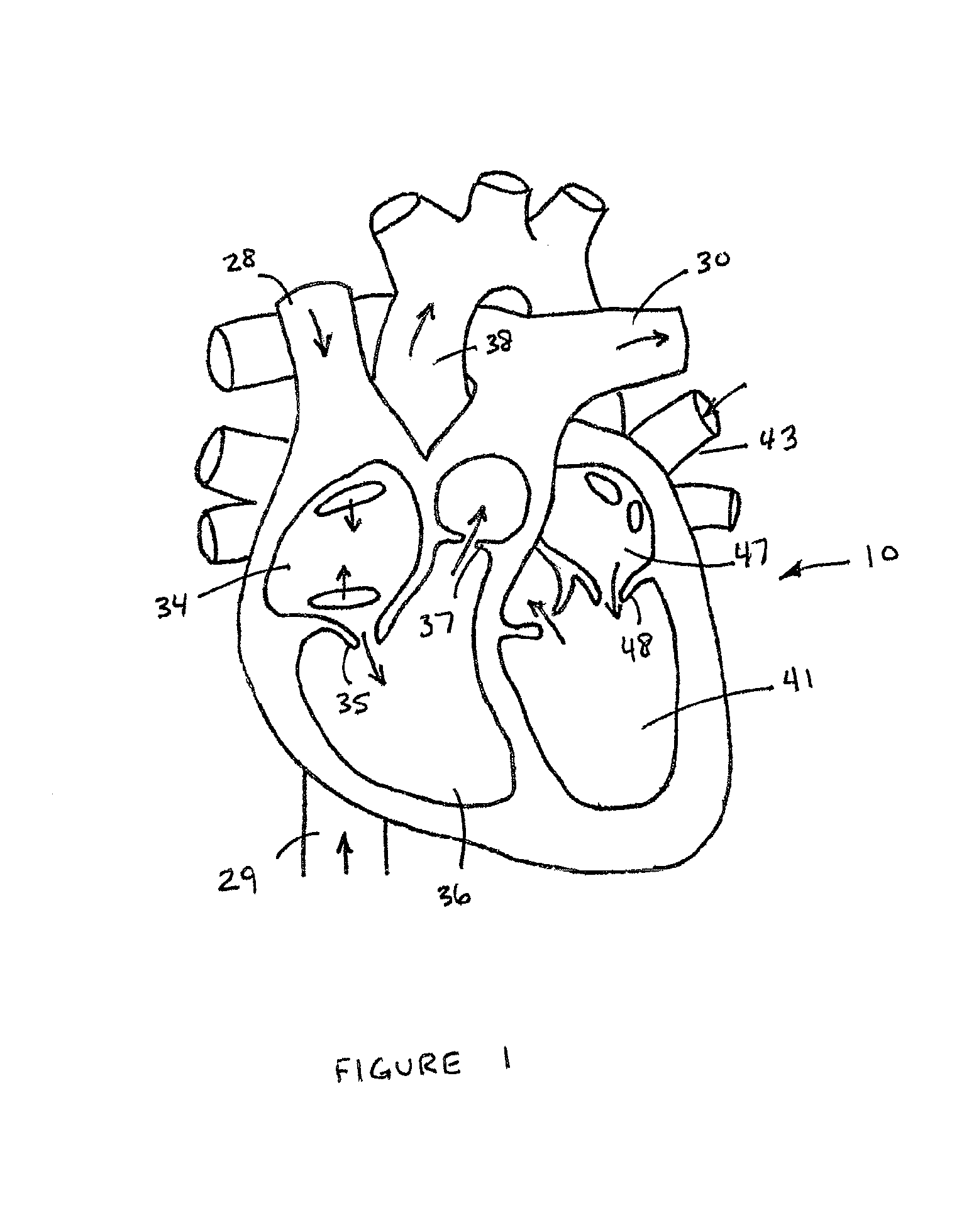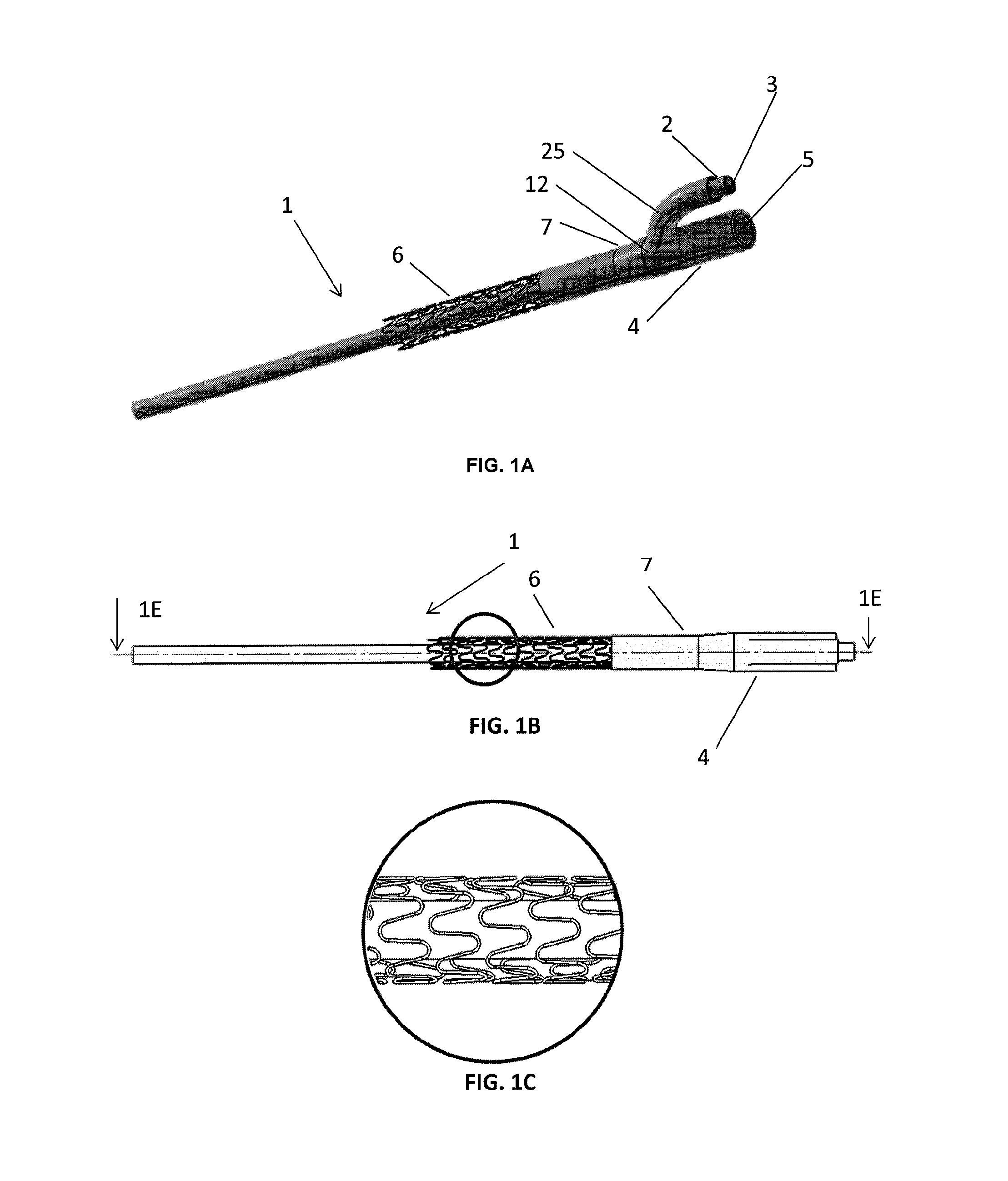Self-expanding cannula
- Summary
- Abstract
- Description
- Claims
- Application Information
AI Technical Summary
Benefits of technology
Problems solved by technology
Method used
Image
Examples
Embodiment Construction
[0010]Disclosed herein is a novel, self-expanding cannula, systems using such cannulae, and methods of their use. The cannulae may comprise single lumen cannula (“SLC”) configurations and double lumen cannula (“DLC”) configurations. The cannula includes at least a first cannula and a self-expanding wire frame attached to the first cannula. The self-expanding wire frame may, for example, be temperature-responsive to expand from a compressed state (providing a reduced cannula diameter as it is moved through a patient's body to the site at which it is to be deployed) to an expanded state (which increases the diameter of the cannula to the diameter intended for its normal use) in response to warming of the wire frame, such as from the patient's own body temperature. Alternatively, the wire frame may have sufficient flexibility so as to allow it to be radially compressed (such as by inserting the wire mesh and cannula to which it is attached into a tearable sheath for initial insertion i...
PUM
 Login to View More
Login to View More Abstract
Description
Claims
Application Information
 Login to View More
Login to View More - R&D
- Intellectual Property
- Life Sciences
- Materials
- Tech Scout
- Unparalleled Data Quality
- Higher Quality Content
- 60% Fewer Hallucinations
Browse by: Latest US Patents, China's latest patents, Technical Efficacy Thesaurus, Application Domain, Technology Topic, Popular Technical Reports.
© 2025 PatSnap. All rights reserved.Legal|Privacy policy|Modern Slavery Act Transparency Statement|Sitemap|About US| Contact US: help@patsnap.com



